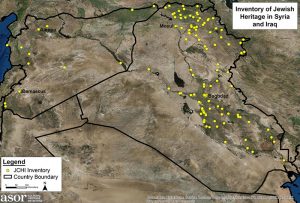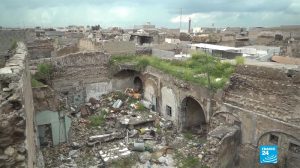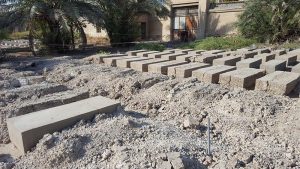
ASOR PRESS RELEASE
ENDANGERED CULTURAL HERITAGE OF THE MIDDLE EAST—THE JEWISH HERITAGE OF IRAQ AND SYRIA
ADDENDUM 6/14/20: JCHI is pleased to report that the Alliance for the Restoration of Cultural Heritage (ARCH) has made significant progress on the restoration of the Shrine of the Prophet Nahum since the drafting of the initial report on the condition of Jewish built heritage in Iraq and Syria. In light of this work, the Shrine of the Prophet Nahum no longer requires the level of intervention called for in the report. For more on ARCH’s work and their current needs, go here
- the Meir Tweig Synagogue in Baghdad—the last surviving ‘functioning’ synagogue in Iraq;
- the Al-Habibiyah Jewish Cemetery in Baghdad – created during the early 20th century and the main location for Jewish burial in the city, with many local Jewish notables interred there;
- the Sasson Synagogue in Mosul—the main synagogue in the city during the 20th century due to its central location in the Jewish Quarter, it represents the best-preserved Jewish heritage in Mosul;
- the Shrine of the Prophet Nahum in al-Qosh—the Shrine dates back to at least the 12th century CE and was an important pilgrimage site for the Jewish community. It consists of a central synagogue with the Prophet’s tomb as well as a series of subsidiary buildings situated around a courtyard.


